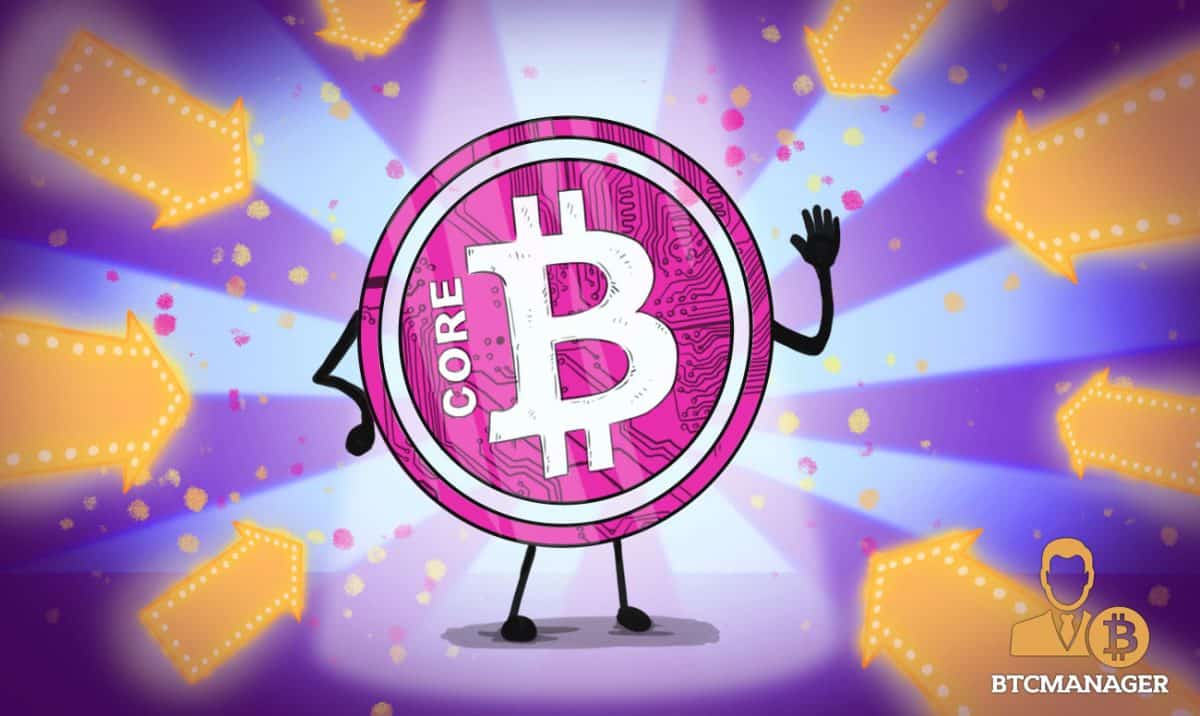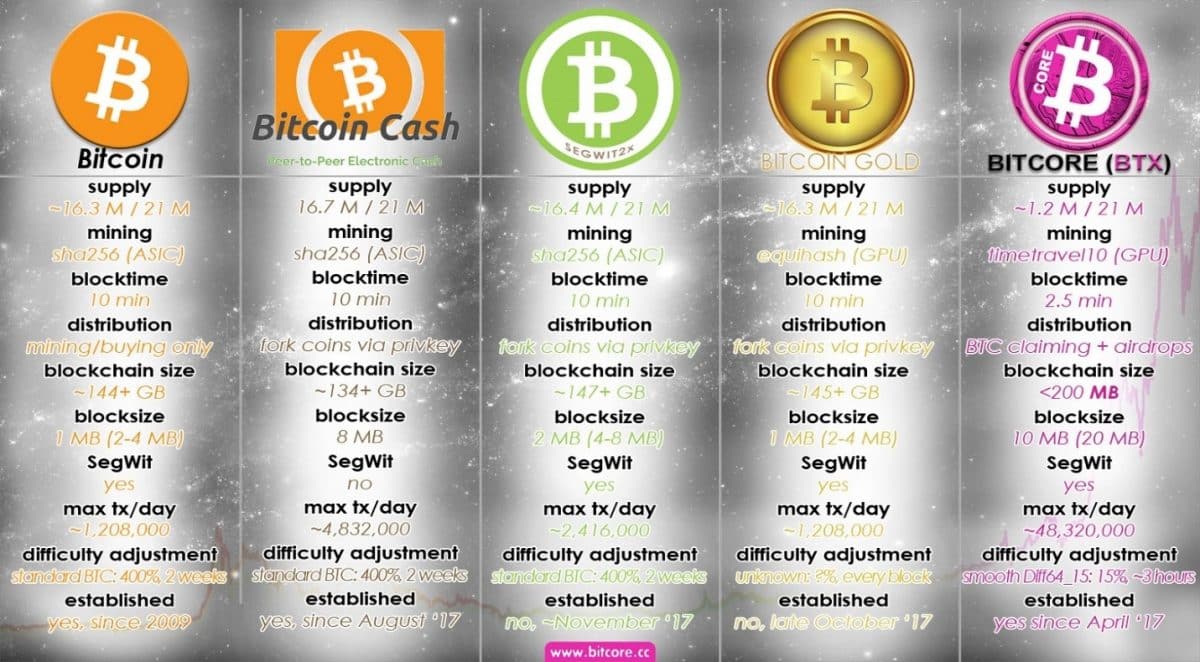Why is the Cryptocurrency Community Ignoring Bitcore?

If you ask any cryptocurrency fanatic what their opinion on the Bitcoin versus Bitcoin Cash war is, you’ll get a variety of responses. Some will tell you that “Bitcoin Cash is the real Bitcoin” and others may tell you that Bitcoin is being mimicked by Bitcoin Cash and that it is a scam that was conjured entirely by Roger Ver as a wild power grab. There are a number of other responses that you may get, but those are among the most popular and frequently stated ones on social media and other areas within the crypto community.
What’s the Source of the Debate?
The source of the contention between these two sides is ‘scalability.’ Anyone that was involved with Bitcoin or cryptocurrency before December 2017 knows that the attention that Bitcoin’s price rise attracted ultimately resulted in the network receiving an unprecedented amount of activity. This led to substantial delays in payment and soaring fees that topped $20+ at times. It was at this point that the debate raged on.
Was Bitcoin ready? Was Bitcoin Cash right in asserting that Bitcoin would never be able to scale to the often sought-out ‘mainstream adoption’ point that cryptocurrency fans have been discussing for years?
While these questions still linger in the atmosphere, the point of this article isn’t to re-hash those questions. In fact, on the contrary, the point of this article is to ask, “Has the true scaling solution been sitting underneath our noses the entire time?”
Bitcore
In a world of consistent hard forks that are deemed as ‘knock-offs’ and ‘copycats,’ it’s easy to look at Bitcore and simply assume, “Here goes another coin copying off of the Bitcoin protocol claiming that it’s the ultimate scaling solution.”
However, there are a few important facts that you must consider before writing off this coin entirely.
- Bitcore actually preceded Bitcoin Cash in its release. The coin was initially released in April 2017, while Bitcoin Cash didn’t come along until that following summer of 2017. While Bitcore’s release was quiet, the technology behind it is innovative in a way that not only advances blockchain technology itself but also provides an adequate compromise between those that are caught between the “Bitcoin vs. Bitcoin Cash” sniper war that’s currently taking place.
- Bitcore is a hybrid fork, not a hard fork. One of the biggest criticisms that was leveled at Bitcoin Cash was that it was an inappropriate contentious hard fork. Conversely, Bitcore is a hybrid fork, so it added and restricted some elements of Bitcoin and incorporated things that you would expect from both a hard and soft fork. Hence the term, ‘hybrid fork.’
- The name doesn’t use ‘Bitcoin’ as its base. Another major criticism that has been leveled from the Bitcoin community toward hard forks is the fact that they all purport to be a variation of Bitcoin in some way (i.e., Bitcoin Cash, Bitcoin Diamond, Bitcoin Gold, Bitcoin Silver, etc.)
These are just the fundamental aspects of the coin – we haven’t even delved into the actual technology that’s behind Bitcore that makes it amazing.
However, before we dig into that, let’s look into the team.
Bitcore Team
A reassuring fact here is that the developers have experience with erecting blockchain technology. In fact, the team that was responsible for creating the Bitsend coin is the same entity that is behind the creation of Bitcore (here’s a link to the Bitsend landing page).
Here’s a picture of the team members as well for individuals that want to put a face to names after they learn more about the individuals behind Bitcore:

You can find an interview with one of the developers regarding their efforts on the Bitsend project here (before they branched off to Bitcore).
Features of the Coin
So, this is probably the part that anyone reading this article has been anticipating the most, and for great reason. This next part will explain why the cryptoworld is doing itself a huge disservice in not acknowledging Bitcore.
Below, is an infographic that gives just a brief overview of what makes Bitcore special:

For those having trouble reading the infographic above, here’s a quick rundown of what’s on there below:
- It has the exact same total supply as Bitcoin (21 million)
- It operates with a different mining algorithm than Bitcoin or any of its forked children.
- The block time is 2.5 minutes.
- The size of the entire blockchain is less than 200 MB!
- The blocksize itself is scaled to fill up to 20 MB per block if needed.
- SegWit has been instituted on the coin, making it compatible with the Lightning Network.
- It can handle 48.32 million TX/day!
- It has a difficulty adjustment algorithm that is designed never to make adjustments greater than 15 percent of its previous difficulty level before the
Let’s unpack all of these neat features, shall we?
Total Supply
This is critical for a few reasons. The first reason is that there are many individuals that believe that Bitcoin’s fairly limited supply is one of its redeeming points. It emphasizes scarcity which, in turn, enhances one’s psychological desire to acquire more of the coin.
Mining Algorithm
This is perhaps one of the more important changes that was made to the coin. The new mining algorithm that it uses, ‘TimeTravel 10,’ is designed to be ASIC resistance (please note: ASIC resistant does not equal ASIC-proof). The beauty of this mining algorithm is that there is only one other coin that has ever employed it on its blockchain, and it never gained widespread appeal (due to reasons other than the mining algorithm). Consequently, it is highly unlikely that Bitmain or any other company has even begun to attempt to find an ASIC exploit for this mining algorithm.
So What Does This Mean?
- The impact of Bitcoin mining on the environment has been talked about and condemned for ages at this point. Bitcore’s TimeTravel 10 mining algorithm helps circumvent that issue entirely.
- The cost to set up mining rigs that will yield any level of profitability is exorbitant, to say the least. This is primarily due to the fact that the ASIC miners that are now available in conjunction with the prevalence of Bitcoin mining itself has created a system in where individuals must pay a significant upfront cost just to enter the industry, followed by enormous maintenance costs to ensure the health and stability of the equipment, the building its housed in, and upkeep for the electricity bill. Bitcore’s TimeTravel 10 consensus algorithm avoids all of that.
- GPU mining, which the TimeTravel 10 algorithm mandates, still relies on the classic PoW (Proof of Work) algorithm, which has been praised as eternally more secure and decentralized than alternative consensus algorithms such as PoS (Proof of Stake). Thus, by ensuring that the Bitcore algorithm relies on GPU mining, it is able to achieve the best of both worlds – Proof of Work validation without the unnecessary environmental/electrical load or out-of-control arms’ race that substantially raises the barriers to entry.
Other projects attempted to circumvent Bitcoin’s SHA256 PoW algorithm in the same way as Bitcore (i.e., Litecoin). However, they’ve ended up eventually running into the same issue because ASIC-resistant miners have now been built for the Scrypt (Litecoin’s algo) mining algorithm as well.
Block time
Another substantial improvement to Bitcore’s structure versus Bitcoin’s is the fact that it doesn’t require as long of a block time as Bitcoin.
Bitcoin’s required block time averages around ten minutes per block. For Bitcore, the average is designed to be around 2.5 minutes.
This means that TX on the blockchain can be confirmed in a quarter of the time.
The reason for the long block time on the Bitcoin network before was because the creator, Satoshi Nakamoto, knew that his/her/their network was relatively new and fragile at the time, so they wanted to take special care to ensure that all miners and full nodes had enough time to sufficiently identify any instances of double spending occurring. However, now that technology has advanced, and the networks have become substantially more populated, many developers in cryptoland have figured out that block times can be reduced significantly.
In fact, Vitalik Buterin, creator of Ethereum, wrote an essay back in 2015, explaining that a reduction in block time could theoretically make a blockchain safer in certain instances. Thus, this should be a welcome change and yet another reason why this coin should stand out as the ultimate gamechanger within the cryptosphere.
Size of the Blockchain
Perhaps the most innovative piece of technology out of everything presented by the Bitcore team is the implementation of Bloom filters. For those that have never heard of ‘Bloom filters’ before, here is a technical explanation of Bloom filters.
Essentially, the beauty of Bloom filters are that they allow you to condense the size of the entire blockchain. So, rather than full nodes having to worry about having the space on their devices to store hundreds of GB worth of data, they only need approximate half a GB of data to store all of the TX that have occurred on the chain and still be able to validate new incoming TX without compromising their ability to catch incidences of double-spending.
This is nothing short of revolutionary in the field of Blockchain technology.
In fact, it’s a solution that neither Bitcoin nor Bitcoin Cash was able to adopt in their scaling debate between each other and it was a major point of contention. Many on the side of Bitcoin Core argued that by increasing the block size, the community would risk compromising Bitcoin’s commitment to decentralization because the increased block size would mean that nodes would have to upgrade in order to handle the space compatibility requirements of the blockchain. Those on the other side of the argument asserted that even if there were fewer entities that were able to run full nodes, it wouldn’t matter in the grand scheme anyway and certainly wouldn’t compromise the network’s security.
However, with the advent of Bloom filters by Bitcore, both arguments are now moot.
Block Size
One major feature that is sure to win over fans of Bitcoin Cash is the fact that the block size limit is formally set at 10MB, which is actually 2MB greater than the current (at the time of writing) block size limit for Bitcoin Cash. This is one of the core features that helps to enhance the scalability of Bitcore to be greater than that of both Bitcoin Cash and Bitcoin Core at the same time.
Segregated Witness
Unlike Bitcoin Cash, however, not only did Bitcore make the block sizes bigger, but they also made sure to incorporate Segregated Witness into their blockchain’s software as well. Thus, the true maximum size that can be reached on the Bitcore blockchain is a whopping 20MB, instead of 10MB.
Another major feature of the Segregated Witness integration is the fact that Bitcore will also be compatible with Lightning Network as well. For those that haven’t noticed, the Lightning Network is one of the most hyped impending innovations that those in the Bitcoin Core community are anticipating. So, by implementing Segregated Witness and allowing the chain to be usable with Lightning Network technology, Bitcoin Core users shouldn’t feel alienated at all by Bitcore.
Max TX/Day
Because of all of this innovative technology that is embedded within Bitcore, they also possess the ability to scale up to 43.2 million TX/day, which amounts to 500 TX/second. This total actually outstrips PayPal’s average TX/second processing rate by a magnitude of five, which is ridiculous.
The coin demonstrated some of its firepower when it set a world record granting its initial airdrops to its users. This fact should speak for itself.
Difficulty Adjustment
Finally, the difficulty adjustment is perhaps the most innovative of its nature to ever be introduced onto any blockchain. This is something that is often overlooked in the cryptocurrency community, yet it’s a topic that deserves substantially more attention for a few reasons:
- Failure to build a difficulty adjustment algorithm can seriously compromise the stability of a blockchain. If you’re looking for an example, just checkout Bitcoin Cash’s debacle with this issue after their launch. In fact, the results were so disastrous that the protocol was forced to initiate a hard fork in order to rectify their mistakes.
- Whenever there’s an influx/exodus of miners on the network, the block times can be wildly unpredictable if there’s not a consistent difficulty algorithm in place to ensure that the actual difficulty of the chain adjusts in an appropriate and restrained manner.
For the reasons listed above (and more that weren’t listed), the Bitcore difficulty adjustment algorithm is superior to all others. It re-calculates every 15 minutes and has a cap on it so that the difficulty does not fluctuate by any more than 15 percent each time. This ensures that the difficulty will always be actively trailing the current mining activity on the chain and that the difficulty is not altered to such an extent that it unnecessarily hinders or helps the miners as they mine the blockchain.
Conclusion
What was listed above are just a few of the reasons why Bitcore will ultimately come out on top as superior to all other blockchains in the sphere. It is the ultimate compromise between all coins. The blockchain is flexible in a way that Bitcoin and Bitcoin Cash aren’t, it has SegWit compatibility just like Bitcoin, larger block sizes like Bitcoin Cash, lower block times like Litecoin and speeds/TX confirmation rates that are absolutely unrivaled.
So Why is This Project Unnoticed?
This project goes unnoticed because the developers are looking to build it the right way. Other projects such as Bitcoin Cash have been able to benefit primarily from the free press associated with the controversy-laden in their proposals and the community’s visceral reaction. However, Bitcore does not attempt to garner excess attention through generating controversy. Instead, the developers of Bitcore have a strict philosophy of ensuring that they only achieve attention through the merits of their work only.
While they may not seem like much now, definitely make sure that you keep Bitcore on your radar for the near future. They’re posed to make some serious waves soon!














